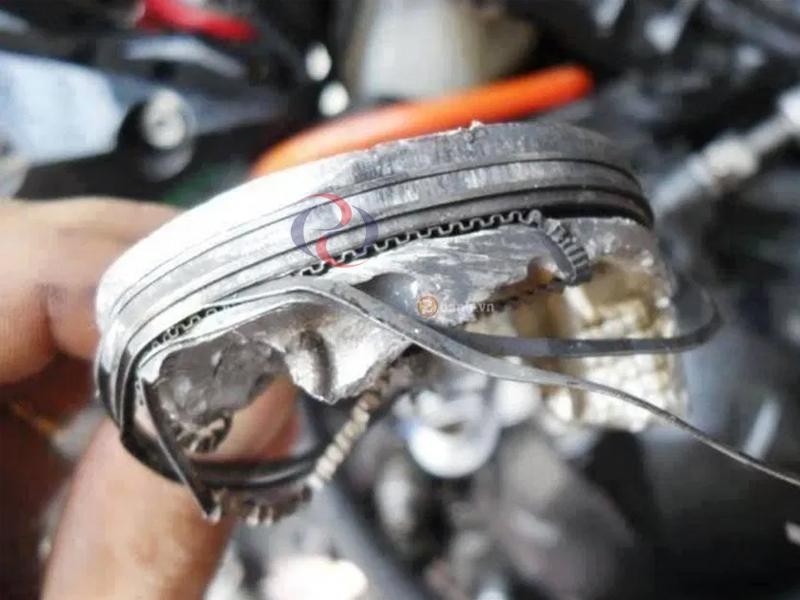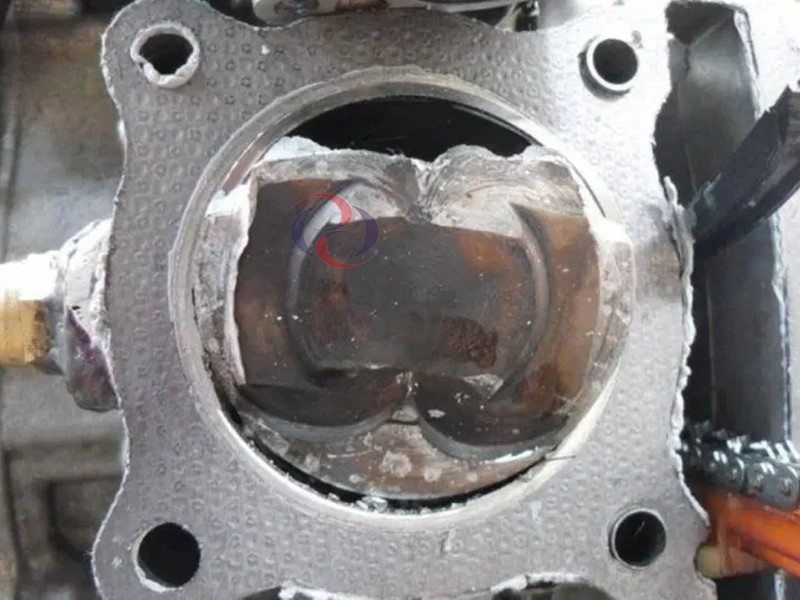“Truck engine seizure,” also known as “engine lock-up,” is a condition caused by insufficient or no engine oil, leading to friction between internal components. This situation severely impacts engine operation and can result in significant damage. This article will help you understand “truck engine seizure,” its symptoms, and effective solutions.
What is Truck Engine Seizure?
Truck engine seizure occurs when a vehicle lacks or runs out of engine oil, causing internal parts like valves, bearings, and piston rings to rub against each other. This friction causes wear and tear, and can seize engine components, reducing performance and potentially leading to severe damage. This phenomenon, also called “engine lock-up,” affects all types of vehicles, including motorcycles.
 Illustration depicting engine seizure due to lack of lubrication
Illustration depicting engine seizure due to lack of lubrication
Recognizing the Signs of Truck Engine Seizure
Several signs indicate that a truck might be experiencing engine seizure:
- The truck, while running normally, suddenly jerks violently and becomes immobile despite pressing the accelerator.
- Checking the oil chamber reveals a significantly reduced oil level.
- Adding more oil does not restore normal engine operation.
- The engine starts but emits a rattling noise accompanied by smoke from the exhaust pipe.
- Thick black smoke pours out from the exhaust pipe.
Consequences of Truck Engine Seizure
Engine seizure has serious consequences:
- The engine cylinder walls get scratched and eventually become worn, preventing the piston rings from compressing air for engine operation.
- In the early stages, the vehicle might still run but will exhibit smoke and unusual engine noises. In severe cases, the vehicle will be unable to start.
Solutions for Truck Engine Seizure
To determine if your truck has engine seizure, you can try:
- 10-Minute Check: If the engine stops but restarts normally when kick-started within 10 minutes, the engine is not seized.
- Kick-Start Lever Hardness Check: If the kick-start lever is stiff, there’s a high possibility of engine seizure.
After confirming engine seizure, wait for 30-40 minutes for the engine to cool down, then attempt to kick-start to see if oil sprays out. If it does, simply replace the oil. If not, follow these steps:
1. Flush the Oil Filter
- Open the oil drain plug.
- Use a straight wire inserted upwards to clean the oil filter.
- If the drained oil is excessively dirty, flush out oil sludge with engine flush oil.
- Refill with new oil of the correct volume and quality.
- Kick-start the engine to check if oil is spraying up. If not, proceed to step 2.
2. Clear the Oil Passage
- Open the valve cover (rocker cover) and kick-start to check if oil overflows at the rocker arm bolt hole below.
- If oil does not spray up: The rocker arm shaft hole is worn, the oil hole on the rocker arm is clogged, or the valve cover gasket oil passage is forgotten to be cleared.
- If oil does not overflow at the rocker arm bolt hole: The oil passage is clogged.
- Use an air pump nozzle pressed against the rocker arm bolt hole and pump air to clear the oil passage. Repeat several times.
- Lift the cylinder block and head assembly by 15-20mm, use a throttle cable or brake cable bent into an L-shape to inspect the oil passage.
 List of symptoms indicating engine seizure in a truck
List of symptoms indicating engine seizure in a truck
Understanding the “truck engine seizure” phenomenon helps you protect your engine and extend the lifespan of your vehicle. Regularly check and maintain your truck to prevent this situation.
